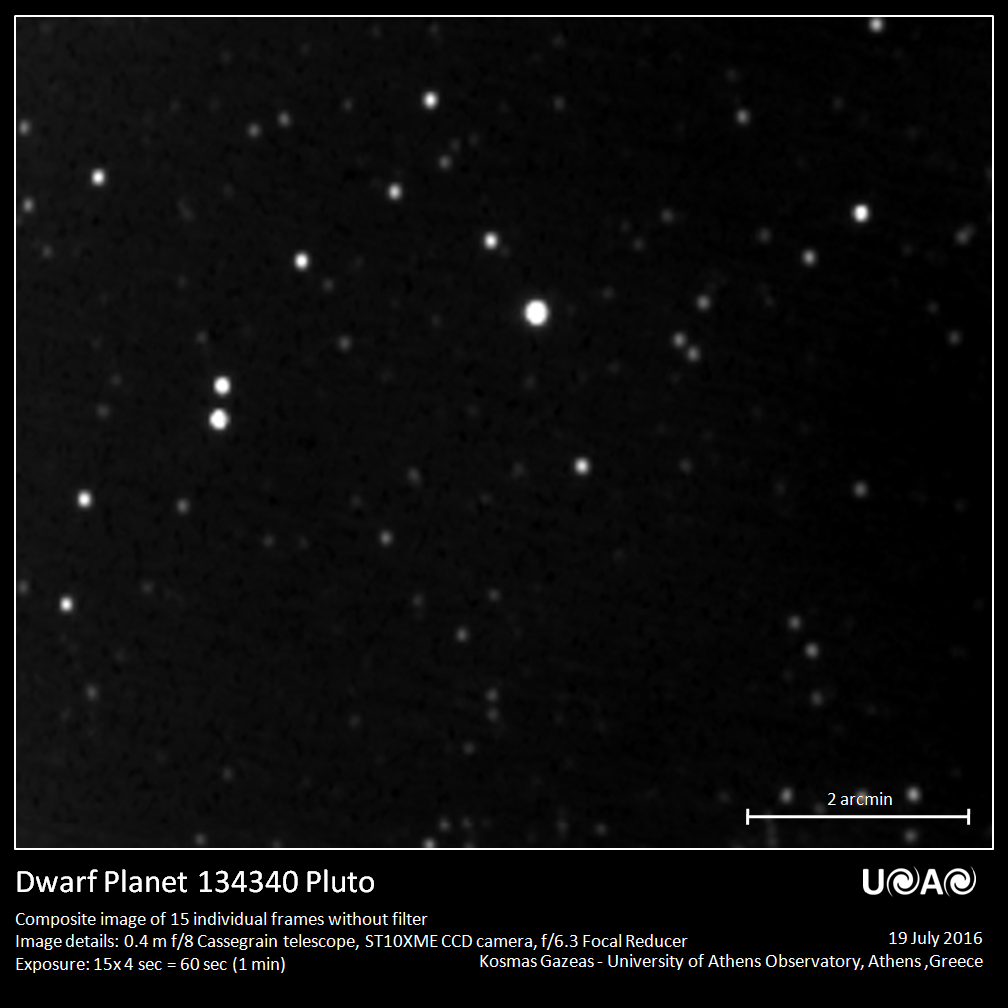Projects related to Stellar and Planetary Occultations
Astronomical occultations are an essential tool for extracting important information on stellar and planetary parameters. Minor planets of our Solar System, asteroids and Trans-Neptunian Objects (TNO) are rarely studied due to their small size and remote location. As they orbit around the Sun, they frequently occult a distant star, giving the unique opportunity to calculate size, shape and possilby detect atmosphere and rings, which may exist.
On 20 January 2017 the Dwarf Planet 136108 Haumea (2003 EL61) occulted a 17.4-mag star and it was expected to be visible from Greece. The occultation was not clearly visible from the University of Athens Observatory, due to clouds. However, Haumea was visible a few minutes before and after the event and it was recorded with the 0.4-m telescope. The animated gif file (left) provides the (cropped) field of view on 20 and 21 January 2017, showing clearly Haumea's motion along the stars within 24 hours. The occulted star is the faint object in the center (in conjunction with Haumea on 20 January 2017).
On 20 May 2017 the Centaur (Minor Planet) (95626) 2002 GZ32 occulted a 17-mag star and it was also expected to be visible from Greece. The occultation was clearly visible for 6 seconds, where the star was totally eclipsed. The corresponding light curve on the right shows the shudden disappearance of the occulted star.
The animated image (left) shows the motion of the minor planet Haumea during 24 hours. The faint occulted star is visible at the center, while Haumea moved towards east-north direction. The light curve of the 17th-mag star when occulted by the Centaur (Minor Planet) (95626) 2002 GZ32 shows a clearly visible eclipse.
A photographic sequence during the Centaur 2002 GZ32 occultation of a 17-mag star. The faint star was completely vanished during a 6-sec period.
The animated gif file (left) provides the field of view before and during the occultation of a 14-mag star by Pluto on 19 July 2016, while the corresponding light curve on the right shows the photometric variation of the occulted star.
People involved in this project are:






